Wildsight in Canada’s Columbia Valley
Columbia River Basin
|
NEW ESRI StoryMaps: What's On Our Shelves & NWNL Song Library & No Water No Life ESRI |
Columbia River Basin
John Bergenske
Executive Director of Wildsight
Alison M. Jones
NWNL Director and Photographer
Robin MacEwan
NWNL Advisor
Fritha Pengelly
Expedition Videographer
Biodiversity Habitat vs Hotel Development
Tourists and Second-home Owners
Teck Cominco’s Transboundary Pollution
Climate Change Impacts
All images © Alison M. Jones. All rights reserved.
The conservation ethic held by John Bergenske and his Canadian colleagues at Wildsight is to protect free-running streams and rivers, water quality, wilderness connectivity for indigenous wildlife and plants in the Upper Columbia River Basin. Their stewardship and preservation efforts for sustainable land use is coordinated with First Nations, and other local, provincial, national and international conservation organizations. Their five autonomous branches within the western British Columbia support the Upper Columbia River from its glacially-fed Columbia Wetlands to its US border at Trail, Canada.
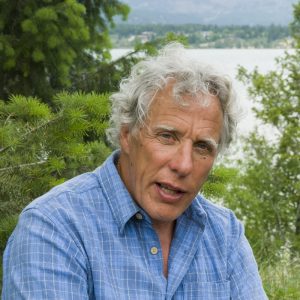
Editor’s Update: In October 2015, NWNL published a blog titled “Canadian Tourism versus Water Quality & Biodiversity,” featuring excerpts of this interview. In January 2020, John Bergenske and Wildsight succeeded, after a nearly 30-year effort, to stop a proposed luxury ski resort from developing 270 square miles {700 sq. kms.] of indigenous and wildlife territory in the Upper Columbia River Basin. Wildsight’s “Jumbo Wild Forever!” fight has now protected local Ktnuaxa First Nation rights and the Purcell Mountains freshwater resources, wild places and grizzly bear populations. This shows the power of determined conservation opposition, even when it requires many years of research, education and community involvement.
NWNL John, thank you for bringing us up to this dramatic overlook of the source of the Columbia River Basin. Please tell us more about this river-sculpted and mountainous watershed here in British Columbia and what issues concern you.
JOHN BERGENSKE Canada’s Columbia River Basin is a continentally significant ecosystem that shares a boundary with the U.S. in its southeast corner. This East Kootenay region has the densest population of inland grizzly bears we know of, and it is a north/south crossroads in terms of species diversity. We share the southern extent of some of the more northern species with the northern extent of the more southern species (including all three major cats that are just on the edge here). What happens here determines activity for grizzly bears, because now the bears only move up and down the spine of the Purcells and the spine of the Rockies. This is their southern extent. Thus, our big program right now is to ensure connectivity of the Purcell Mountains system.
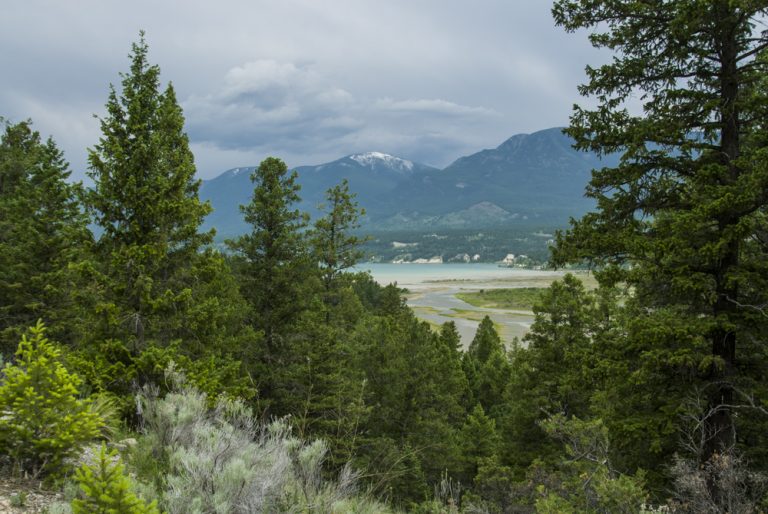
NWNL That’s related to your opposition to the current proposal for development of the Jumbo Glacier Resort.
JOHN BERGENSKE Yes, it would be a big mega-resort on the north end of the Purcell Wilderness Conservancy just upstream, where Toby Creek comes out at Invermere. I learned the numbers from researcher yesterday. Now biologists are predicting a major disaster if Jumbo Resort goes forward because of its potential movement of bear populations. The resort would break up their genetic connectivity over the long term, and in the short term for the regional species.
We have very strong public opinion in the region against development of the resort, but the decisions are made in Victoria where the developers have very good connections. I’m more frustrated with this campaign than all the campaigns we’ve done over 37 years, because this should have been an easy issue. The public is clearly against it, but that’s only the regional public. We haven’t been able to generate interest from the larger population centers as it’s really far away. Much of our work is around providing information.
With mountain caribou, we did about five years of field research. We’ve been just as involved researching grizzly bear populations and density. All that information needs to be formatted so we keep the public informed and good social decisions are made.
The major issues we’re dealing with here are those around water. East Columbia Lake -where we are sitting – is in a Provincial Park. But past the closed gate here is private land. Immediately beyond that is a Wildlife Management Area we secured in the mid-90’s through land-use designations. We worked very hard on that. On the last day, regional managers said, “We can’t do this now.” Then the Minister of Environment signed the paper going out the door, just before the government called the election.
This new Wildlife Management Area is contiguous with the Columbia River Wetlands. Management Area. The designation doesn’t mean other things can’t be done, but it gives the top priority to wildlife and thus far has been very useful for this Wetlands. However, Fairmont Hot Springs Resort Hotel, just down the road, has proposed development of several hundred new homes, condominiums, another golf course and so on for this side of the lake, which is winter habitat for bighorn sheep.
This east side of the lake is a diverse valley bottom with grassland habitats. We’ve tried to keep it in its natural state and maintain its high value. For the last year-and-a-half, we’ve had very strong public support; but the resort was privately sold to a new owner now in negotiations with the land trusts. We’re keeping the public informed and involved in supporting the land trust’s negotiations.
The K’tunaxa First Nation is absolutely key to what’s happening here because this is their most sacred territory. It is the place of their Creation Myth, so they are very concerned about how it is managed, its natural values and its wildlife values.
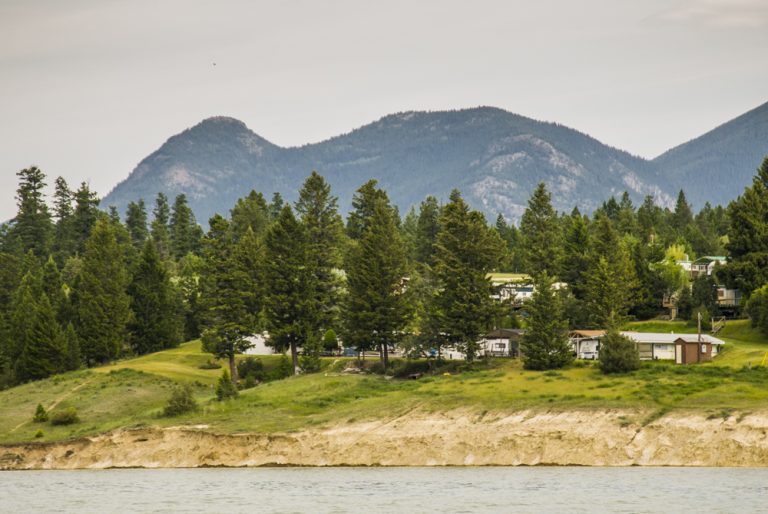
NWNL Is there a strong community among the K’tunaxa?
JOHN BERGENSKE Their committee represents various bands. The Columbia Lake Band, just south of here, is most involved on this issue.
NWNL Are there other development issues you are following?
JOHN BERGENSKE Yes WildSight, with over 1,000 members now, has giant issues. In the last two weeks, British Petroleum came in with hundreds of millions of dollars to spend on a coal-bed methane development in the Elk and Flathead Valleys. This is a major concern. We were just about done dealing with a couple of the other major players on coal-bed methane; but now BP has come in in a very, very big way. Tomorrow’s job is to research and start working with them. But it’s hard to know where to start.
NWNL What are other issues that you focus on?
JOHN BERGENSKE Tourism development is a giant issue in the valley. Environmentally, tourism and mining are where forest companies were 20 years ago. Promoting awareness of what tourism and mining development means is a big challenge. Tourists don’t understand what needs to be respected. Many don’t recognize that if you inundate the land with inappropriate tourism use, even if it is with really nice little country homes, we’ll lose key pieces of the landscape needed to make the whole system work.
Wildsight works to make sure development is appropriately placed and respects all values, including water values. In mining, we’re behind by almost a century in terms of legislation and regulations. That gives them a very free hand. Miners say, “Oh no it’s not the way it used to be.” The forest industry also says that, year after year.
The forest industry came around due to our major marketing campaigns. But having an effect in the marketplace has meant that many habits need to be changed. We’re far from where we need to be, but we’re certainly making strides. Industries must recognize they’re being watched and have a social responsibility to their community and their planet.
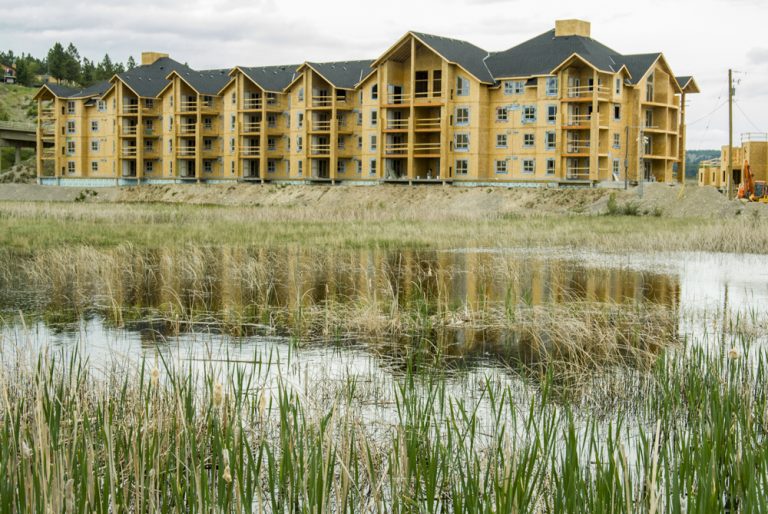
NWNL Does your tourism focus include people who come here to go boating, spend a vacation with their family, or buy a second home?
JOHN BERGENSKE Oh, all of those. There are obvious complications of development and the needed infrastructure support posed by second-home owners, especially those who’ve financially benefited from Alberta oil situation now in northern B.C. That kind of money was never here until this last decade. The changes that have taken place in this decade just makes people’s heads spin. It’s not just about the environment – it’s about how our community functions, and other things.
Residents can be slow to understand we’ve exploited our resources in order to survive. But at the same time, when people, whether in the forest industry or whatever, get to know and respect the land, pretty soon they end up being some of our best allies. It’s a matter of educating people who think, “Oh, it’s all beautiful and isn’t it fun.” At first, they aren’t conscious that their choices will ruin all they thought was so great. People don’t always recognize what they are losing until all of a sudden they cry, “Oh, what happened?”’ We progress almost too fast to realize the values we are losing are important in a much bigger picture.
NWNL You mentioned the impacts of mining pollution. Can we discuss Teck Cominco (aka ,Teck Resources, Limited), the zinc-smelting business downriver in Trail, Canada.. I understand it’s better now than when they were dumping straight into the river…
JOHN BERGENSKE Yes, no question that the situation in Trail is better now than 20 or 25 years ago. But the river there still suffers from effluent and earlier contaminants. Are you aware of the giant, international issue with Teck Cominco? Personally, I think that it’s one river and Teck has successfully created a Canada versus U.S. issue. They’ve framed it that way, but I think it’s really inappropriate because people on both sides share the environment. While that was politically a very smart move for Teck, it’s unfortunate because the US has some ability to enforce some legislation.
Legislation in Canada’s system is not nearly as strong as U.S. environmental legislation or your Endangered Species Act. Our environmental community here would just die to have something as controversial and difficult as it is in the States. At least you have something to legislate around. We don’t have that type of a framework on many of our issues. Here it’s always a struggle to deal with legislative frameworks for industry. To deal with the pulp mill here that was over the legal limits for years, we finally started publishing. Every week we’d get data from the mill, graph it and put it in the newspaper. That just drove them crazy. They would claim a legal variance and we’d answer, “If you have enough political influence, you can have variances from the government every week. So, we’re not going to go after you; but the fact is you are polluting; and you are polluting at a standard that doesn’t even meet a relatively lax standard.” And this is not an unusual situation unfortunately.
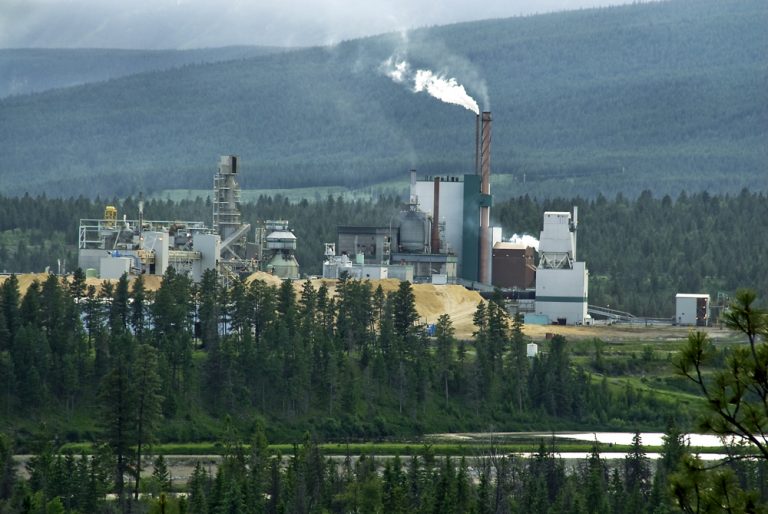
Much of our legislation sounds good on paper; but there are no environmental assessments, no enforceability and no ability to say no. There’s only the ability to suggest mitigation measures. There just aren’t many lines in the sand, so you have to have an informed public so informed people working within government can make the system work. Laws themselves won’t do it by themselves. We have some excellent people we work with from West Coast Environmental Law and from Sierra Legal Defense Fund. However, they end up having to argue things on a very broad principle. They don’t have the hard lines they would if they were in the U.S.
NWNL What is your outlook on the potential impacts of climate change?
JOHN BERGENSKE I don’t think climate change just a fantasy. Its implications are significantly different than what happens in any given month. We had a fair bit of wet in May, which used to be a dry month. June used to be the wet month. I think we’re having an extension of a dry summer up here, which is pleasant as long as it doesn’t dry out so much that everything burns up. It’s noticeable how climate change is extending the warm season.
As well, we’ve noticed how much warmer winter has been. It’s supposed to be -30º for several weeks in the beginning of January and on. But we haven’t seen that for quite a few years. And, hey, man! nobody is missing “-30 º. We like it at only -15 º with great snow. This year, we had an incredible winter for snow and temperatures. That’s why we still have such good snowpack up high.
It’s definitely a different world, and it’s not just this one year. he patterns are there, even in our short lifetime. We hardly even put the felt packboots on in winter anymore. It’s quite interesting. Up by Radium Hot Springs, I remember having 500-K, cross-country skis races. There’s no way now. We haven’t been able to cross-country ski there for years now.
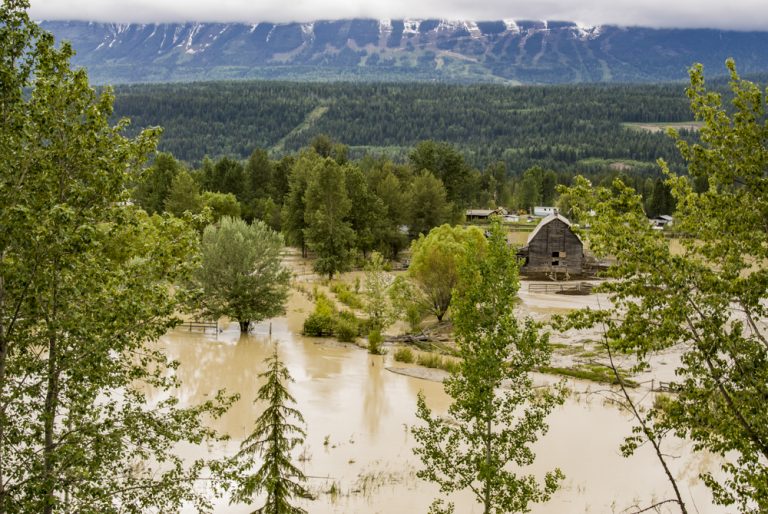
NWNL John, what other Columbia River Basin issues we should focus on while here in the East Kootenay Valley?
JOHN BERGENSKE The Columbia Wetlands are just amazing. Ellen Zimmerman, in Golden, is a great advocate of this 111-mile [180-km] wetland system that is the headwaters. These wetlands are unique in their importance to the flyway and in the fact that they are the headwaters of the Columbia River system. You will follow those wetlands as you drive north. Do drive in and off of some of those little roads that come out of Spillmacheen, Brisco and other little towns. If you drive across the river, you can also go up on the west side road.
NWNL Thank you for those tips. Lastly, do you work with The Yellowstone to Yukon Conservation Initiative [Y2Y]?
JOHN BERGENSKE Yes, Wildsight works closely and well with Y2Y. The whole vision that Harvey Locke helped create for this biogeographical region is a great thing in terms of just the vision itself. The broad idea of opening and protecting a Yellowstone to Yukon corridor for wildlife, including the Purcells, Columbia Trench and Rockies, is key to making the Columbia River Wetlands system function. So, it’s great to have Y2Y working to implement and connect migratory corridors. Yellowstone to Yukon: Freedom to Roam, a book of conservation photography and research by Florian Schulz is also a helpful tool in promoting this whole concept.
NWNL Ah, Florian Schulz is a colleague in the International League of Conservation Photographers and a NWNL partner. We agree Florian’s book is a great tool for raising awareness of the importance of protecting our natural world. It is also a model for NWNL’s work. John, thank you so much for this conversation. We had better pack up now before these dark clouds drench this lovely overlook of the Columbia River headwaters!
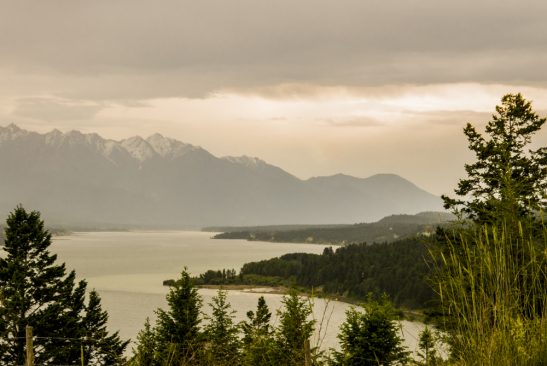
Posted by NWNL on January 22, 2019.
Transcription edited and condensed for clarity by Alison M. Jones.
Interview Guidelines describe the NWNL protocol for editing raw transcripts.
All images © Alison M. Jones. All rights reserved.
